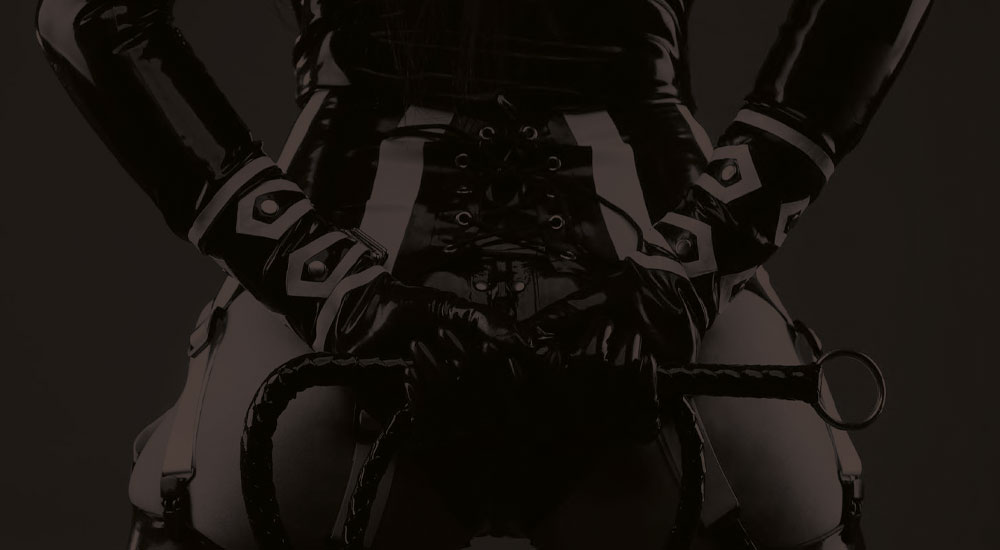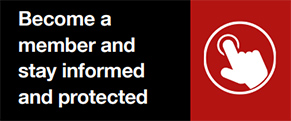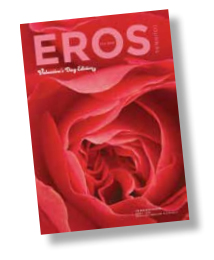An interview with Club Owner, Martha Tsmaris
By Robbie Swan
Martha Tsmaris is the well known owner of Inflation and Chasers nightclubs in Melbourne’s famous King st precinct. Last year Inflation hosted the long running Saints and Sinners Ball where two patrons were shot and seriously wounded by police. Citing negligence, bias, discrimination and more, she took on the police for the harm they had caused her patrons and the damage they had done to her business through the botched raids. While the police ended up settling with Martha and the two people they wrongly shot, the event was far from over in her mind. When police said that Inflation was a ‘honeypot’ for drug dealers as one of the reasons they went in there in the first place, she sued them for defamation and won a $90,000 payout.
Martha is a modern and outward looking club owner who combines business savvy with a broad social conscience. Always searching for a nightclub model to keep patrons safe with the latest technology and the best social science, she has recently created a Nightclub awareness program for 13 and 14 year old school kids. The Eros Journal caught up with her at Inflation nightclub recently.
So when did you first decide that a career in nightclubs was your calling?
I started in the industry 31 years ago when I was only 21. I was doing an accounting degree at Philip Institute which became RMIT and working part time as a receptionist at Peter Iwaniuk’s old venue – the Bombay Club. I also learned how to become a video DJ there. At one stage Peter was telling everyone ‘we need to get more people in’ and I said… ‘I go to uni ..I can do that – give me some cards’. So I went and got some cards done and with Pat, my partner at the time, we started organising teams of people to hand out cards and promote the venues. I gave up uni and started a company called Soultronics Promotions. Soon we were doing this for nine venues and had over 90 staff and they would all come to our house picking up all their cards and distributing them all over Melbourne and that’s how it all started.
Peter Iwaniuk is well known to many Eros members. What was he like to work for then?
Peter was a great mentor and has more knowledge of the nightclub scene than anyone I know. He was one of the original owners of Chasers, which along with Inflation, are the two longest running clubs in Melbourne – 42 years this year to be exact. I also worked for Peter at The Tunnel and The Bombay Club. He eventually bought Inflation’s venue so he became my landlord as well. Peter is one of those rare people who is always laughing but extremely down to earth and connected. He’s very approachable and always up for a chat but never takes his eye off the ball.
It seems like the nightclub scene has deep roots.
Olivia Newton-John originally opened Chasers. I was only 10 when that era started but I remember dressing up and trying to look like an ABBA dancer! A developer, George Frew, was the first owner of Inflation and he only passed away recently. He was ahead of his time and decided not to develop it along the usual lines but to turn it into a nightclub instead. But above all, clubs were about dancing… everyone wants to dance and to meet people to dance with. Studio 54 in New York was one of the big inspirations for Chasers which opened originally on Chapel street.
Why King st?
This was one of those areas where there wasn’t much going on for a while in the 60s and 70s and I guess it was just ripe for clubs to form a strip here being on the outskirts of the CBD. When the Casino was built then that all changed and all roads led to it. It affected the clubs quite a lot because they had nightclubs in the Casino and any amount of money so they were very glamorous. Hard to compete with that. They had everything at the 24 hour city. Then the violence started so we all self-regulated and bought in compulsory training for security guards, compulsory CCTV, and an accord started up between the business owners called the West End Forum accord. I was a member of that and was told recently that I’d won an award for being the longest serving committee member – 24 years! We then decided to come together and do everything on best practice and to share our information with the police and hopefully they would share with us. Wasn’t always a good relationship but in the beginning it was. Nothing works at 100%.
What sort of technology do you use here to help control large crowds?
We use SCANTECH. We are an industry of sitting ducks and are always blamed for our patron’s bad behaviours. It’s always us and not little Johnny’s fault when he punched his girlfriend on the dance floor. It was the grog served by the big bad venue that did it. So we got sick of this attitude and when I saw an improved model of the Scantech system I bought it. It was developed by the son of a Perth nightclub owner who managed to link all the clubs together to develop an integrated ‘shit list’ of bad patrons. I encouraged other Melbourne nightclub owners to buy this technology as well and now its being rolled out Australia-wide.
How does it work?
If you threaten to call the cops or call the family of a young person for misbehaving in a club, they don’t care. But they do care if you ban them from the club. They care even more if you can ban them from other nearby clubs. Today there’s close to 300 machines Australia wide and close to 15,000 people on that banned list. Some young people just make a genuine mistake and probably won’t offend again so you can take them off but they can also still have a asterix next to their name so you know they once were problematic. You’ve gotta have an open mind. If you alienate people from being socialised altogether it will backfire on you. But I need to protect staff and patrons from idiots at the same time.
Are there any legal issues with this sort of technology? In the sex industry you have the Ugly Mug list which is circulated widely but sex workers are always keen to keep it very ‘in house’.
When we ban someone we always keep the video footage of them and we make a report. So when people challenge us over holding their image we show them the footage and they just go away. We’ve banned all sorts of people… lawyers, the sons and daughters of very high ranking police officers, etc. When I started Chasers one guy dropped a sulphur bomb in the place and the whole venue had to be evacuated. No one knew who he was so we had to find the footage of him and that was my motivation for getting this technology on board. I had a subsequent meeting with concerned civil liberty reps about it. I said to them I wasn’t interested in their address or anything. And I asked them if they had ever been assaulted in a club. None of them had. I said ‘I’ve been glassed in the face and unless you’ve had discussions with victims of violence, don’t come here lecturing me on the rights of violent people’. Just don’t come to my venue. There are hundreds of other places you can go… go somewhere else.
So they were more worried about the data and who had access to it?
Yes, but Scantech is a stand alone system and is password protected so only the boss has access. And everything is wiped after 30 days (you can set this time) except for the assaults and bad behaviour. The only people who stay on it are those who cause trouble. It also gives you print outs of the numbers of people which you can match with staff levels to get a better and more efficient staffing times. I think it’s important to keep male and female patron levels much the same and this technology allows you to do that. It also gives you suburbs of where people are coming from because it works off drivers licenses and this gives venue owners extra information for promotion and targeting.
It’s socially responsible technology then?
Yes.. I’ve never heard of anyone using it to sell home loans or anything like that. We use this so we can reclaim the initiative of controlling violence and anti-social behaviour.
I hear that you’ve also been working with schools to give young kids a nightclub experience long before they are 18?
Four years ago I realised that most people misuse drugs because of social isolation and disconnection. So I created a program called Heading Out/Heading Home which is being evaluated by Griffith University. The students get on a bus as if they are heading for a good night out and they fill in a questionnaire. They come to the venue and line up like adults would. We scan their school IDs, make sure they do up their shoelaces and make them look like they’re really into it. But remember these are 13-14 year olds. When they come into the club they get told about the various jobs that are available in this part of the hospitality industry and whether they might be suitable to help get them through university later on. We explain the rules and regulations around visiting the club. Then we turn to the issue of drugs. We do a drink spiking experiment where we give everyone ‘drunk-goggles’ which you can only buy from overseas and simulate the visual aspects of being drunk with some of the other disorienting features as well. You can get these glasses in all different strengths from the effect of one drink to about 10. Then we gave them all a cup with water in it and someone goes around mingling with them and slipping a pill (actually a Smartie) into their drink just to show them how vigilant they need to be. They all reckon no one will get it past them but with the drink goggles simulating how people ’s vision can be distorted when they’ve had even a couple of drinks they are surprised how often they miss it.
We talk about drug and alcohol limits and how long they can stay in your system. How your weight determines how much alcohol you can have. We give them graphs and information. The cost of drugs, what’s in drugs and what they do to you. We talk about mental health and we introduce a ‘Women’s safety program’ about women walking home alone etc.
We videoed all the kids walking around bumping into each other with the drunk goggles ..and how potentially fights can break out because of this .. saying ‘sorry’ when you bump into someone etc.
Of course the Herald Sun ran an article saying what a terrible thing it was to educate 14 year olds about going to nightclubs and how it would lead to the corruption of Melbourne’s youth. They said we were trying to groom young people into drinking and going to nightclubs! If I’m trying to convert 14 year olds school kids into clients that means I’m waiting five years to get them in the door. That’s a very bad business model. Even the school kids would be able to see through that – an experienced journalist couldn’t.
You need to get to kid’s early to explain the pitfalls in nightclubbing. On the other hand this is really a course in how to have a really good time at a club as opposed to a bad one and potentially getting expelled from them. In a survey I did of these kids, a large number of them said they started experimenting with drugs at 12 – 13 years.
So we’ve done a couple of pilot projects now. A school principal called me yesterday and they want me to roll out the program for their year 10 curriculum. They have had drug and alcohol education at the school but they found that many of the kids got bored. When they come to the nightclub venue we send them back on a party bus with music where they do a post-experience questionnaire while they are still really engaged.
I did speak to the education dept about it a while ago and got a pretty negative response. However Nick Wakeling MP did support it and we’ve done three pilot projects now.
Do nightclubs have a unique way of socialising people ?
We only exist because there is a demand. We are here because people want nightclubs. The DJs aren’t playing 60s rock …they’re playing the music that young people want. They’re all on Snapchat and Instagram and they all learn the latest dance moves online and then come here to show them off as well as meeting new people. This is a controlled environment with trained staff and monitors, people trained in first aid and CCTV footage. We have seven layers of authority coming in here to check our compliance with a whole host of standards… seven!!!
And we pay massive fees and taxes. We pay tax on alcohol, our licence fees, rates and rent. So government and big business do well out of us. The problem is that many of the venues are being bought up by developers for units because high-rise units offer them the best return. All you can run in this sort of landscape is small bars and so then you turn the precinct into a place for bar-hopping with one big casino at the end of it.
We’re losing the things that used to make Melbourne unique. We want to be a 24 hour city but this way is not going to achieve that. We’re already losing the corner pubs because the land they’re on makes for good high-rise apartments. We’re victims of our own success in a way. The developers have worked that out. No one wanted to come into the city years ago so we made it vibrant and everyone wanted to come and now we’re making it into a place for high-rise housing where people want to go to bed at 10 o’clock and don’t want any noise after that.





















